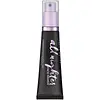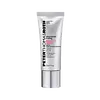What's inside
What's inside
 Key Ingredients
Key Ingredients

 Benefits
Benefits

 Concerns
Concerns

 Ingredients Side-by-side
Ingredients Side-by-side

Water
Skin ConditioningButylene Glycol
HumectantPolyacrylamide
Ethylhexyl Palmitate
EmollientGlycerin
HumectantC13-14 Isoparaffin
EmollientPhenoxyethanol
PreservativeCaprylyl Glycol
EmollientPullulan
Laureth-7
EmulsifyingTocopheryl Acetate
AntioxidantTetrahexyldecyl Ascorbate
AntioxidantSilica Dimethyl Silylate
EmollientNannochloropsis Oculata Extract
HumectantCarbomer
Emulsion StabilisingSodium Lactate
BufferingPotassium Sorbate
PreservativeTriethanolamine
BufferingSodium Benzoate
MaskingLitchi Chinensis Pericarp Extract
Skin ConditioningPolysorbate 20
EmulsifyingSodium Hyaluronate
HumectantHexylene Glycol
EmulsifyingPalmitoyl Tripeptide-1
Skin ConditioningPalmitoyl Tetrapeptide-7
Skin ConditioningWater, Butylene Glycol, Polyacrylamide, Ethylhexyl Palmitate, Glycerin, C13-14 Isoparaffin, Phenoxyethanol, Caprylyl Glycol, Pullulan, Laureth-7, Tocopheryl Acetate, Tetrahexyldecyl Ascorbate, Silica Dimethyl Silylate, Nannochloropsis Oculata Extract, Carbomer, Sodium Lactate, Potassium Sorbate, Triethanolamine, Sodium Benzoate, Litchi Chinensis Pericarp Extract, Polysorbate 20, Sodium Hyaluronate, Hexylene Glycol, Palmitoyl Tripeptide-1, Palmitoyl Tetrapeptide-7
Water
Skin ConditioningGlycerin
HumectantButylene Glycol
HumectantSodium Silicate
BufferingSodium Magnesium Fluorosilicate
AbrasiveMagnesium Aluminum Silicate
AbsorbentSea Water
HumectantCarrageenan
Pullulan
Sodium Phytate
Xanthan Gum
EmulsifyingHydrolyzed Rhodophyceae Extract
Sodium Benzoate
MaskingFoeniculum Vulgare Seed Extract
Skin ConditioningSymphytum Officinale Root Extract
Skin ConditioningDipeptide-2
Skin ConditioningCitric Acid
BufferingPalmitoyl Tetrapeptide-7
Skin ConditioningBoswellia Serrata Extract
Skin ConditioningCentella Asiatica Extract
CleansingMica
Cosmetic ColorantArgania Spinosa Kernel Extract
Skin ConditioningCamellia Sinensis Leaf Extract
AntimicrobialHesperidin Methyl Chalcone
AntioxidantLactobacillus Ferment Lysate
Skin ConditioningSaccharomyces Lysate
Skin ConditioningHydrolyzed Lupine Protein
Skin ConditioningMedicago Sativa Seed Extract
Skin ConditioningTocopheryl Acetate
AntioxidantAscorbic Acid
AntioxidantPanthenol
Skin ConditioningCarbomer
Emulsion StabilisingSodium Citrate
BufferingChlorhexidine Digluconate
AntimicrobialIron Oxides
Titanium Dioxide
Cosmetic Colorant1,2-Hexanediol
Skin ConditioningCaprylyl Glycol
EmollientSteareth-20
CleansingSodium Cocoyl Glutamate
CleansingPotassium Sorbate
PreservativeHydroxyacetophenone
AntioxidantPhenoxyethanol
PreservativeWater, Glycerin, Butylene Glycol, Sodium Silicate, Sodium Magnesium Fluorosilicate, Magnesium Aluminum Silicate, Sea Water, Carrageenan, Pullulan, Sodium Phytate, Xanthan Gum, Hydrolyzed Rhodophyceae Extract, Sodium Benzoate, Foeniculum Vulgare Seed Extract, Symphytum Officinale Root Extract, Dipeptide-2, Citric Acid, Palmitoyl Tetrapeptide-7, Boswellia Serrata Extract, Centella Asiatica Extract, Mica, Argania Spinosa Kernel Extract, Camellia Sinensis Leaf Extract, Hesperidin Methyl Chalcone, Lactobacillus Ferment Lysate, Saccharomyces Lysate, Hydrolyzed Lupine Protein, Medicago Sativa Seed Extract, Tocopheryl Acetate, Ascorbic Acid, Panthenol, Carbomer, Sodium Citrate, Chlorhexidine Digluconate, Iron Oxides, Titanium Dioxide, 1,2-Hexanediol, Caprylyl Glycol, Steareth-20, Sodium Cocoyl Glutamate, Potassium Sorbate, Hydroxyacetophenone, Phenoxyethanol
Ingredients Explained
These ingredients are found in both products.
Ingredients higher up in an ingredient list are typically present in a larger amount.
Butylene Glycol (or BG) is used within cosmetic products for a few different reasons:
Overall, Butylene Glycol is a safe and well-rounded ingredient that works well with other ingredients.
Though this ingredient works well with most skin types, some people with sensitive skin may experience a reaction such as allergic rashes, closed comedones, or itchiness.
Learn more about Butylene GlycolCaprylyl Glycol is a humectant and emollient, meaning it attracts and preserves moisture.
It is a common ingredient in many products, especially those designed to hydrate skin. The primary benefits are retaining moisture, skin softening, and promoting a healthy skin barrier.
Though Caprylyl Glycol is an alcohol derived from fatty acids, it is not the kind that can dry out skin.
This ingredient is also used as a preservative to extend the life of products. It has slight antimicrobial properties.
Learn more about Caprylyl GlycolCarbomer is a polymer of acrylic acid. Its main role is to create a gel consistency.
A high amount of carbomer can cause pilling or balling up of products. Don't worry, most products contain 1% or less of carbomer.
Glycerin is already naturally found in your skin. It helps moisturize and protect your skin.
A study from 2016 found glycerin to be more effective as a humectant than AHAs and hyaluronic acid.
As a humectant, it helps the skin stay hydrated by pulling moisture to your skin. The low molecular weight of glycerin allows it to pull moisture into the deeper layers of your skin.
Hydrated skin improves your skin barrier; Your skin barrier helps protect against irritants and bacteria.
Glycerin has also been found to have antimicrobial and antiviral properties. Due to these properties, glycerin is often used in wound and burn treatments.
In cosmetics, glycerin is usually derived from plants such as soybean or palm. However, it can also be sourced from animals, such as tallow or animal fat.
This ingredient is organic, colorless, odorless, and non-toxic.
Glycerin is the name for this ingredient in American English. British English uses Glycerol/Glycerine.
Learn more about GlycerinPalmitoyl Tetrapeptide-7 (formerly Palmitoyl Tetrapeptide-3) is a lab-made peptide with anti-inflammatory and skin-repairing benefits. It's made up of four amino acids (glycine, glutamine, proline, and arginine) and palmitic acid (which helps it penetrate skin more effectively).
This ingredient helps reduce inflammation by limiting the production of interleukin-6 (IL-6), a chemical that triggers inflammatory responses, particularly after UV exposure.
Less inflammation = slower collagen breakdown and a longer-lasting, youthful appearance.
Palmitoyl Tetrapeptide-7 also stimulates collagen production and supports a healthier skin barrier.
Over time, this can improve skin firmness, hydration, and reduce the appearance of fine lines. It’s commonly paired with Palmitoyl Tripeptide-1 in the well-known Matrixyl 3000 complex for enhanced anti-aging effects.
This ingredient has been shown to be effective and safe in cosmetic use and you'll typically find it in small amounts (less than 0.01%).
Due to its palmitic acid base, it may not be safe for Malassezia folliculitis.
Read more about other common types of peptides here:
Learn more about Palmitoyl Tetrapeptide-7Phenoxyethanol is a preservative that has germicide, antimicrobial, and aromatic properties. Studies show that phenoxyethanol can prevent microbial growth. By itself, it has a scent that is similar to that of a rose.
It's often used in formulations along with Caprylyl Glycol to preserve the shelf life of products.
Potassium Sorbate is a preservative used to prevent yeast and mold in products. It is commonly found in both cosmetic and food products.
This ingredient comes from potassium salt derived from sorbic acid. Sorbic acid is a natural antibiotic and effective against fungus.
Both potassium sorbate and sorbic acid can be found in baked goods, cheeses, dried meats, dried fruit, ice cream, pickles, wine, yogurt, and more.
You'll often find this ingredient used with other preservatives.
Learn more about Potassium SorbatePullulan is a low viscosity polysaccharide (a long chain carbohydrate) with binding and film forming properties when dissolved in water. It is used to create a "silicone-like" or silky feel in cosmetics without adding viscosity.
According to a manufacturer, this ingredient's ability to easily dissolves makes it a great carrier for active ingredients.
Due to it being edible and tasteless, you'll likely find this ingredient in breath freshener strips. This ingredient is produced from the starch of the fungus, Aureobasidium pullulans.
Pullulan is stable over a broad-range of pH.
Learn more about PullulanSodium Benzoate is a preservative. It's used in both cosmetic and food products to inhibit the growth of mold and bacteria. It is typically produced synthetically.
Both the US FDA and EU Health Committee have approved the use of sodium benzoate. In the US, levels of 0.1% (of the total product) are allowed.
Sodium benzoate works as a preservative by inhibiting the growth of bacteria inside of cells. It prevents the cell from fermenting a type of sugar using an enzyme called phosphofructokinase.
It is the salt of benzoic acid. Foods containing sodium benzoate include soda, salad dressings, condiments, fruit juices, wines, and snack foods.
Studies for using ascorbic acid and sodium benzoate in cosmetics are lacking, especially in skincare routines with multiple steps.
We always recommend speaking with a professional, such as a dermatologist, if you have any concerns.
Learn more about Sodium BenzoateTocopheryl Acetate is AKA Vitamin E. It is an antioxidant and protects your skin from free radicals. Free radicals damage the skin by breaking down collagen.
One study found using Tocopheryl Acetate with Vitamin C decreased the number of sunburned cells.
Tocopheryl Acetate is commonly found in both skincare and dietary supplements.
Learn more about Tocopheryl AcetateWater. It's the most common cosmetic ingredient of all. You'll usually see it at the top of ingredient lists, meaning that it makes up the largest part of the product.
So why is it so popular? Water most often acts as a solvent - this means that it helps dissolve other ingredients into the formulation.
You'll also recognize water as that liquid we all need to stay alive. If you see this, drink a glass of water. Stay hydrated!
Learn more about Water